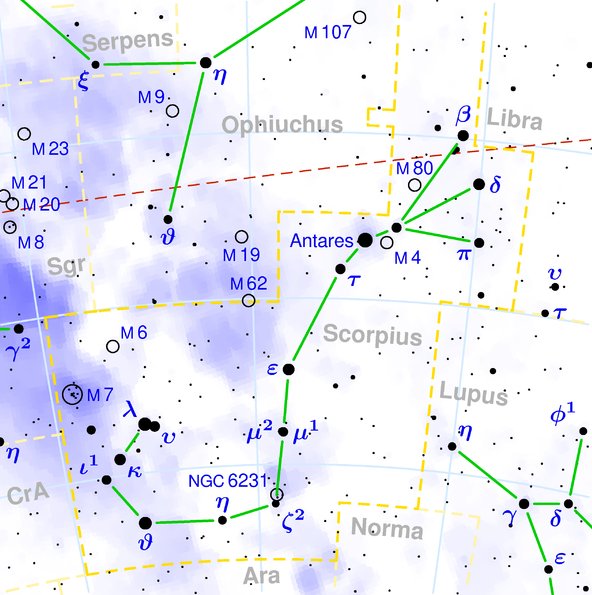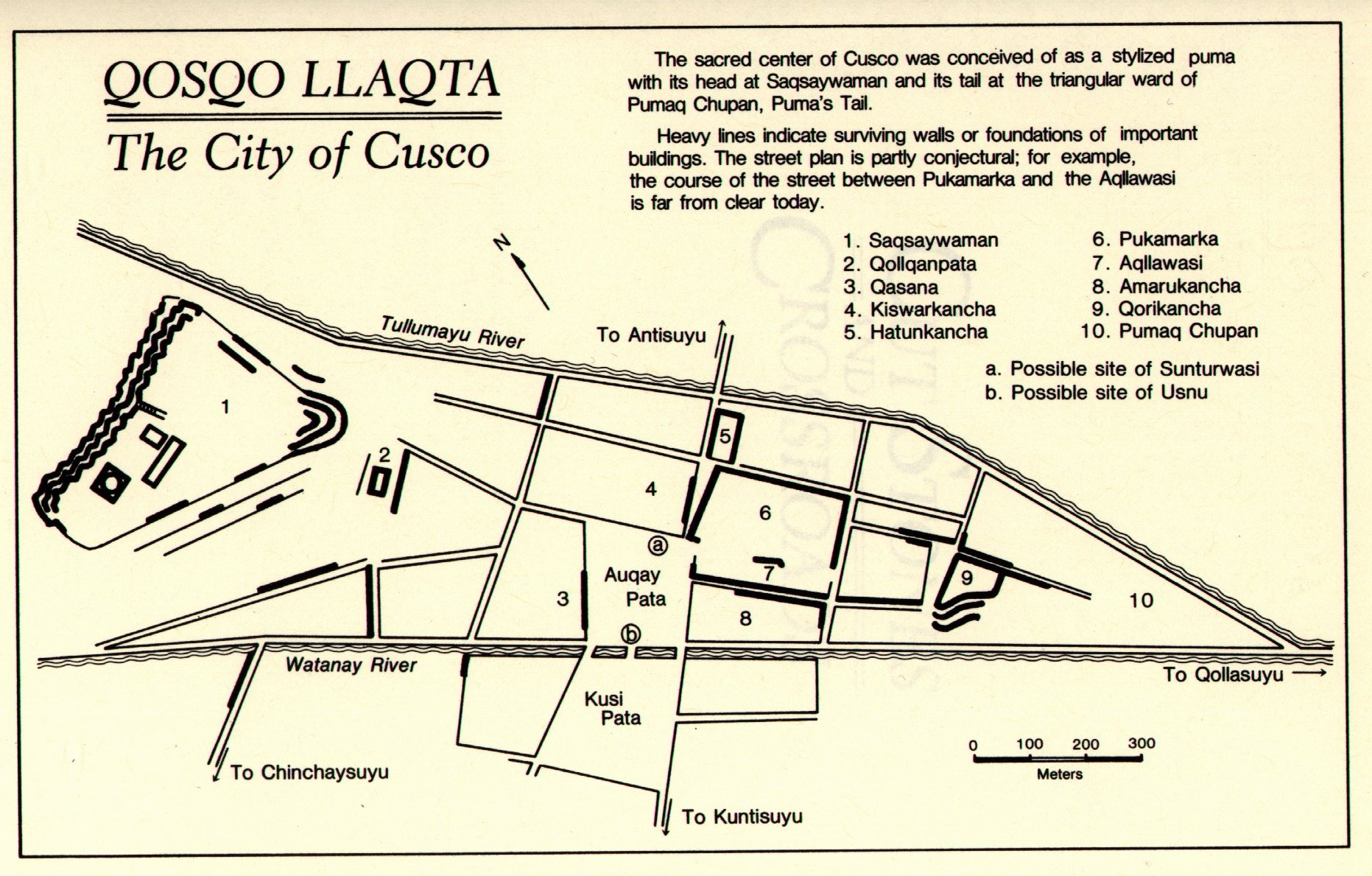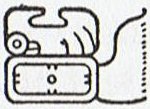I suggest the G text had a season with rain clouds similar to that of the Mayas:
 |
 |
 |
 |
 |
|
8 Mol |
9 Ch'en
(Well) |
10
Yax
(Green) |
11
Sac
(White) |
12
Ceh
(Red) |
|
5 * 20 = 100 |
 |
3 |
 |
89 |
 |
4 |
 |
|
Ga4-7
(90) |
Ga4-11 |
Ga7-15
(184) |
Ga7-20 |
|
100 |
Such a season may have gone away (kua
oho) when μ Scorpii
(Deneb-akrab) rose with the Sun, at the 6th Chinese
station Tail.
|
٭SEPTEMBER 12 |
13
(256 = 4 * 64) |
14
(*177 = 6 * 29½) |
15 |
16 |
 |
 |
 |
 |
 |
|
Ga7-20 |
Ga7-21 |
Ga7-22 (191) |
Ga7-23 |
Ga7-24 |
|
SEPTEMBER 26 |
27
(270) |
28 |
29 |
30
(*193) |
|
Atria (253.9) |
Tail-6 |
ι
Ophiuchi (255.3),
Grafias
(255.4) |
κ
Ophiuchi (256.2), ζ Arae (256.5), ε Arae
(256.8), Cujam (256.9) |
no
star listed (257) |
|
Wei,
η Arae (254.3),
DENEBAKRAB
(254.7) |
|
November 29 |
30 |
December 1 |
2
(336) |
3 |
|
NAKSHATRA DATES: |
|
٭MARCH 14 (73) |
15 |
16 |
17 |
18 |
|
MARCH 28 |
29 |
30 |
31
(90) |
APRIL 1 |
|
Tabit (71.7), π²
Orionis (71.9) |
π4 Orionis (72.1),
ο¹ Orionis (72.4), π5 Orionis (72.8) |
π¹ Orionis (73.0),ο²
Orionis (73.4),
HASSALEH
(73.6), π6 Orionis (73.9) |
Almaaz (74.7),
HAEDUS I
(74.8) |
HAEDUS II
(75.9) |
|
May
31 |
June
1 |
2 |
3 |
4 (155) |

There were 4 Mayan
20-day months with rain clouds (with 6 'berries' for each
such cloud). Also on Easter Island 4 * 20 = 80 days might have been
used as a measure for the rainy season in the sky. Possibly 40 days and 40 nights:
... Ta'aroa sat
in his heaven above the earth and conjured forth
gods with his words. When he shook off his red and
yellow feathers they drifted down and became trees.
He created the
first parents, Tumu-nui, Great Foundation, to
be the husband, and Paparaharaha, Stratum
Rock, to be the wife. He put the very essence of
himself into their creation; yet when he commanded
them to wed, each refused to go to the other.
So Ta'aroa
created other gods and Atea, Bright Expanse,
the Sky-goddess, who dwelt in darkness in the
confined sky Rumia.
By Papa-tuoi,
Thin Earth, Atea was the mother of children
who became artisans for Rai-tupua-nui,
Great-Sky-builder. They assisted him in erecting the
ten heavens above the earth. In the highest of these
dwelt the god Tane, so it was called the
Sky-of-the-sacred-omens of Tane and
Sky-of-the-water-of-life of Tane. The next
highest heaven was called Hiro's
Sky-of-prophets.
Atea then became
the wife of Rua-tupua-nui, Source of Great
Growth, and they became the parents of all the
celestial beings, first the shooting stars, then the
Moon and the Sun, next the comets, then the
multitude of stars and constellations, and finally
the bright and dark nebulae.
When this
tremendous task had been accomplished Atea
took a third husband, Fa'a-hotu, Make
Fruitful. Then occurred a curious event. Whether
Atea had wearied of bringing forth offspring we
are not told, but certain it is that Atea and
her husband Fa'a-hotu exchanged sexes. Then
the [male] eyes of Atea glanced down at those
of his wife Hotu and they begat Ru. It
was this Ru who explored the whole earth and
divided it into north, south, east, and west ...
Counting 80 days backwards from November
30 (334) leads us to (254) September 11 at Ga4-27. The rainy
season could therefore have begun with Ga5-1, when Manus Catenata
(the Chained Hand of Andromeda, ι) was close to the Full
Moon:
 |
 |
 |
 |
|
Ga4-8 |
Ga4-9 (92) |
Ga4-10 |
Ga4-11 |
|
August 23 |
24 (236) |
25 |
26 |
 |
 |
 |
 |
|
Ga4-12 |
Ga4-13 (96) |
Ga4-14 |
Ga4-15 |
|
August 27 |
28 (240) |
29 |
30 |
 |
 |
 |
 |
|
Ga4-16 |
Ga4-17 (100) |
Ga4-18 |
Ga4-19 |
|
August 31 |
September 1 |
2 |
3 |
 |
 |
|
Ga4-20 |
Ga4-21 (104) |
|
September 4 |
5 (248) |
 |
 |
 |
 |
|
Ga4-22 |
Ga4-23 |
Ga4-24 |
Ga4-25
(108) |
|
September 6 |
7 |
8 |
9 (252) |
 |
 |
|
Ga4-26 |
Ga4-27 |
|
September 10 |
11 (254) |
 |
 |
 |
 |
 |
|
Ga5-1 (111) |
Ga5-2 |
Ga5-3 |
Ga5-4 |
Ga5-5 |
|
JULY 10 |
11 |
12 (193) |
13 |
14 |
|
θ Crateris (175.0), υ Leonis
(175.2), ω Virginis (175.3), ι
Crateris (175.5) |
ο Hydrae (176.1) |
ζ Crateris, ξ Virginis (177.0),
λ Muscae (177.1), ν Virginis
(177.2), μ Muscae (177.8) |
Al Sarfah-10 /
Uttara Phalguni-12 /
Zibbat A.-16 /
Shēpu-arkū sha-A-17 |
Phekda, β Hydrae (179.3), η
Crateris (179.9)
Deneb Cygni |
|
93 LEONIS
(178.0),
DENEBOLA
(178.3),
ALARAPH
(178.6) |
|
September 12 |
13 (256) |
14 |
15 |
16 |
|
NAKSHATRA DATES: |
|
JANUARY 9 |
10 |
11 |
12 |
13 (378) |
|
λ
Piscium (358.0),
MANUS CATENATA
(358.1), Alrai, θ Phoenicis
(358.4), κ Andromedae (358.7) |
ω
Aquarii (359.2), 78 Pegasi
(359.5) |
ψ
Andromedae (360.1), σ Phoenicis
(360.4) |
γ¹ Oct. (361.4). φ
Pegasi (361.7) |
Dzaneb (362.4),
γ² Oct.(362.8) |
|
π |
March 15 |
16 |
17 |
18 (77) |

Rei in Ga7-22
(alluding to 22 / 7) was glyph number
191 and the exceptional Rei with
a hand hanging as if lifeless at the back side
in Ga5-1 was glyph number 111 (= 191 -
80). The nuku type of
glyph exhibited no arms.
The hind quarters of the Lion was
immersed in sweet rain water. Thus he
changed his sex and became Virgo. But he may
have kept the tip of his tail (93
Leonis) dry above the water:





The expression (from the tale of Noah) of a deluge stretching for 40 days and 40 nights suggests a division in 2. In the G text there is evidence of a division halfway from Manus Catenata to Denebakrab. March 14 (3-14) + 39 = 73 + 39 = 112 and 112 - 64 = 48 (FEBRUARY 17). When in rongorongo times
the Sun reached Arcturus in day 295
(October 22) it could have meant there
were another 40 days (or rather nights) ahead
before the waters would subside:
 |
 |
 |
 |
 |
 |
|
Ga6-6 |
Ga6-7 |
Ga6-8 |
Ga6-9 |
Ga6-10 (150) |
Ga6-11 |
|
AUGUST 14 |
15 |
16 |
17 (229) |
18 |
19 |
|
MUPHRID (210.1), ζ Centauri
(210.3) |
φ Centauri (211.0), υ¹
Centauri (211.1), υ² Centauri (211.8), τ Virginis (211.9) |
Agena (212.1), θ Apodis
(212.5), THUBAN
(212.8) |
14h (213.1) |
Neck-2 |
Al Ghafr-13 /
Svāti-15
TAHUA-TAATA-METUA-TE-TUPU-MAVAE |
|
π HYDRAE, χ Centauri
(213.0), Menkent (213.1) |
ASELLUS TERTIUS,
κ VIRGINIS,
14 Bootis (214.8) |
15 Bootis (215.2),
ARCTURUS
(215.4), ASELLUS
SECUNDUS (215.5),
SYRMA,
λ Bootis (215.6), η Apodis (215.8) |
|
October 17 |
18 |
19 |
20 |
21 |
22 (295) |
|
NAKSHATRA DATES: |
|
FEBRUARY 13 |
2-14 (45) |
15 |
16 |
(413 = 14 * 29½) |
18 |
|
ι Arietis (28.0), λ Arietis (28.2), υ Ceti
(28.8) |
ALRISHA,
χ Phoenicis (29.2), Alamak (29.7) |
Arku-sha-rishu-ku-2 |
η Arietis (31.9) |
no star listed (32) |
θ Arietis (33.3),
MIRA
(33.7) |
|
2h (30.4) |
| κ Arietis
(30.3), HAMAL
(30.5) Alkes
|
| April 18
(108) |
19 (*29) |
20 (475) |
21 |
22 |
23 |
The same division of time, we should remember, occurred in the C text, where heliacal Muphrid was not only at the first glyph on side b but also at the beginning of line Ca2:
|
٭JULY
31 (212) |
 |
|
Ca2-1 (27) |
|
Te heke |
|
MUPHRID
(210.1), ζ Centauri (210.3) |
|
October 17 (290) |
|
NAKSHATRA DATES: |
|
٭JANUARY
29 (395 = 29 + 366) |
|
Al
Sharatain-1 /
Ashvini-1 /
Bond-16 /
Mahrū-sha-rishu-ku-1 |
|
Segin,
Mesarthim, ψ
Phoenicis (27.2),
SHERATAN, φ
Phoenicis (27.4) |
|
April 17 (473 = 107 + 366) |
|
٭AUGUST
1 |
2
(214) |
3 |
4 (*136) |
5 |
 |
 |
 |
 |
 |
|
Ca2-2 |
Ca2-3 |
Ca2-4 (30) |
Ca2-5 |
Ca2-6 |
|
erua tagata |
te henua |
tagata oho ki tona huaga |
kua oho |
|
φ
Centauri (211.0), υ¹ Centauri (211.1), υ²
Centauri (211.8), τ Virginis (211.9) |
Agena (212.1), θ Apodis (212.5),
THUBAN
(212.8) |
14h
(213.1) |
Neck-2 |
Al Ghafr-13 /
Svāti-15
TAHUA-TAATA-METUA-TE-TUPU-MAVAE |
|
π
HYDRAE,
χ Centauri (213.0), Menkent (213.1) |
ASELLUS TERTIUS,
κ
VIRGINIS,
14 Bootis (214.8) |
15
Bootis (215.2),
ARCTURUS
(215.4),
ASELLUS SECUNDUS
(215.5),
SYRMA,
λ Bootis (215.6), η Apodis (215.8) |
|
October 18 |
19 |
20 |
21 |
22
(295) |
|
NAKSHATRA DATES: |
|
٭JANUARY
30 |
31 |
٭FEBRUARY
1 |
2 |
3 |
|
ι Arietis (28.0), λ
Arietis (28.2), υ Ceti (28.8) |
ALRISHA, χ
Phoenicis (29.2), Alamak (29.7) |
Arku-sha-rishu-ku-2 |
η Arietis (31.9) |
no star listed (32) |
|
2h
(30.4) |
|
κ Arietis (30.3),
HAMAL (30.5)
ALKES |
|
April 18 (108) |
19
(*29) |
*30
+ 366 = *396 |
*214 + 183 = *397 |
22 |
When at the time of Hyadum II the Sun reached
π Hydrae it was in AUGUST
17, i.e. in day 229 (equal to the number of glyphs on side a
of the G tablet).

The last Greek
lettered star in the Water Serpent was π.
|
Egyptian sebchet |
 |
Phoenician
pe |
 |
Greek
pi |
Π (π) |
|
Wikipedia: '...
according to a theory by Theodor Nöldeke from
1904, some of the letter names were changed in
Phoenician from the Proto-Canaanite script ...
pit 'corner' to
pe 'mouth' ...'
However, I
think the Egyptian source hieroglyph could
have been Gardiner's O14 (sebchet), a
sign which illustrates a corner with
feather-like ornaments upon the walls. The
meaning was 'portal' according to Wilkinson.
Or why not an Archway for exit, the Mayas
had a 'grasping hand' (Chikin) in the
west:
To be in a
corner means there is no way forward.
|
|









































